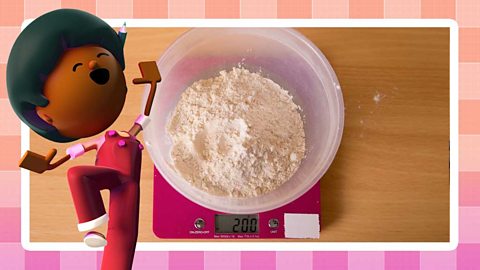Heat in the kitchen

Lots of kitchen appliances produce heat. These include cookers, microwaves, toasters and kettles.
Heat is required to cook food. It is therefore really useful, but it can also be dangerous in the kitchen.
You need to be aware of appliances that produce heat and understand how to use them correctly.
By following instructions and always being supervised by an adult, you can make sure that you stay safe.

Video: Cooking safely with heat
Join Suzie, Jack and Ríona in the kitchen and learn how to use the hob safely.
Suzie: I'm in my kitchen with Jack and Ríona. We are heating some water to make pasta. But we need to make sure that we do this safely.
You should always have an adult present when cooking with heat and hot water. So, which pan should we choose?
Jack: This one.
Suzie: Good choice. Why did you choose this one?
Jack: Because it's a deep pan.
Suzie: Yes, the deep pan has enough space for all of our ingredients. The handle is insulated with plastic, so it won't get hot to hold. For pans with a metal handle, use an oven glove to protect your hands.
Jack: It's quite heavy!
Suzie: It'll be even heavier when it's full. That's why only an adult should move hot pots, pans and food around in the kitchen.
So, we've filled our pan with water. Before we turn the stove on, we need to decide which ring to use. What do you think?
Ríona: We should use the ring that is slightly smaller than the pan.
Suzie: Exactly! Can you think of a reason why?
Ríona: If the ring is bigger than the pan, the heat will come out from around the edge.
Suzie: Yes and having a hot, exposed ring would be dangerous. Or if it was a gas hob, the flames might spread past the base of the pan. What if the ring is much too small?
Ríona: The heat will be focused in one spot in middle.
Suzie: Yes - it might take a lot longer to heat the water, so it wouldn't be very efficient.
Jack: This one looks like a good choice.
Suzie: So, position the pan in the middle of the ring and the handle should always be pointing to the side.
What if the handle was pointed over this ring?
Jack: The handle would get hot and maybe melt!
Suzie: What if the handle is pointing out over the edge?
Jack: Well, that would be dangerous because someone might knock it off by accident!
Suzie: Exactly! Before we turn on the hob, we must make sure there is nothing in the way that could catch fire.
Ríona: Like a tea towel?
Suzie: Exactly.
Now that we know the hob is clear, let's turn it on. What will we see when the water starts to simmer?
Jack: The water will start to move slowly. And we will start to see small bubbles on the surface and steam.
Suzie: If you listen carefully, you will be able to hear the water too.
What happens when it boils?
Ríona: The water will move fast whenever it's boiling. And we will start to see much bigger bubbles.
Jack: Time to add our pasta!
Suzie: The boiling water can spit out of the pot, which is why we add the pasta carefully and don't lean directly over it. Always ask an adult to supervise you. Cooking with heat is an important skill, but it should always be done safely.
Jack: Even when using the toaster or microwave!
Suzie: An adult should always help when you're using any appliance for cooking with heat. Now what do you think we should have with our pasta?
Jack: Pesto.
Ríona: And cheese!
Types of hob
The hob is usually found on top of the cooker.
There are three main types of hob that you are likely to find in a kitchen:
- gas hob
- electric hob
- induction hob
All hobs work slightly differently depending on the make and model, so make sure that you ask an adult for advice before using one.
Find out more about the different types of hob in the slideshow below.
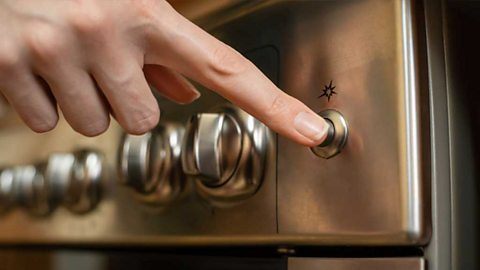
Image caption, Gas hob
Gas hobs produce heat through an open flame. Most hobs will automatically light the flame, but some work by pressing an ignition button to create a spark to light the gas. If the gas does not light quickly, then the knob should be switched off immediately to avoid gas leaking into the kitchen.
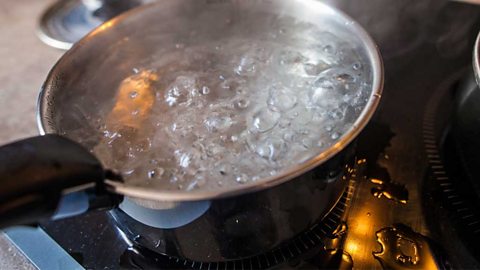
Image caption, Electric hob
Electric hobs pass an electrical current through the wires and coils inside the hob. This causes them to get hot and produce heat through the glass or metal top. To use most electric hobs, first a temperature level must be selected. The top of the hob and the pan will take some time to heat up.
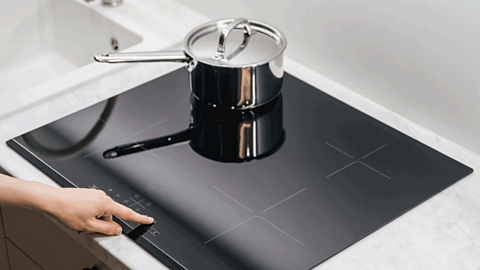
Image caption, Induction hob
Another type of electric hob is the induction hob. Induction hobs are powered by electricity, but it’s the pan that gets hot rather than the hob. In order for the hob to work, you need a magnetised pan that allows the electricity to pass through. The bottom of the pan will then heat up.
1 of 3
Hob safety tips
An adult should always switch on the hob and be present to help with the cooking.
Before using a hob, it is important to check nothing is hanging over the hob, such as a tea towel.
Choose a ring on the hob that is slightly smaller than the width of the pan, so the flames or heat do not spread past the base.
Point the handle of the pan away from the edge of the hob, so it cannot be easily knocked off. It should also be pointed away from any other hob rings that are being used.
Always use an oven glove when touching metal pan handles in case they’re hot.
Switch the hob off straight after use.
Regardless of which hob you are using, you should never touch the hob. Even after the hobs are switched off, they can stay hot for a while afterwards.

Boiling and simmering
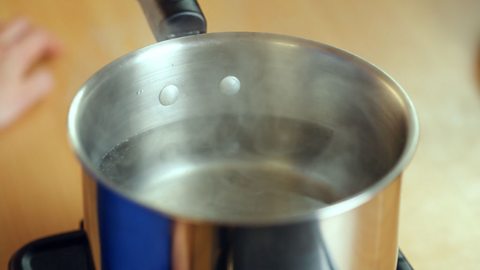
When water is added to a pan over a high heat or a lid is added, it is likely to reach a BoilingBoiling is when you heat a liquid to the point where it is bubbling vigorously and there is lots of steam. You will see large bubbles on the surface of the water. temperature of 100°C.
Once it reaches this, the water starts to bubble frantically with lots of steam coming from the surface. Boiling water is used to soften foods like pasta and rice.
SimmeringSimmering is just below boiling point and is noticed by gentle bubbling on the surface of the liquid. You will see small bubbles on the surface of the water. happens at a slightly lower temperature than boiling point.
When water is simmering, the bubbles are smaller and gentler on the top. Simmering is used to cook a food more slowly or to thicken a sauce.
Once water gets hot in a pan, the steam and the water become dangerous.
Care must be taken when draining water and an adult should always do this for you, as the steam is very hot.

Other kitchen appliances
Let's find out more about some other types of appliances that use heat.
Remember to always have an adult present when cooking with any kitchen appliance that uses heat.
Key words
| Boiling | When you heat a liquid to the point where it is bubbling vigorously and there is lots of steam. You will see large bubbles on the surface of the water. |
| Simmering | Simmering is just below boiling point and is noticed by gentle bubbling on the surface of the liquid. You will see small bubbles on the surface of the water. |
| Bake | When food is cooked at a set, hot temperature for a required time. This is usually done in an oven with dry heat, like with muffins, baked potatoes and cakes. |
| Roast | When food is cooked for a longer time in a hot oven, for example, a roast chicken or roast potatoes. |
Quiz: Cooking safely with heat
Can you remember all the ways you can cook safely with heat? Try this quiz to find out.
More on Cooking and nutrition
Find out more by working through a topic
- count13 of 13
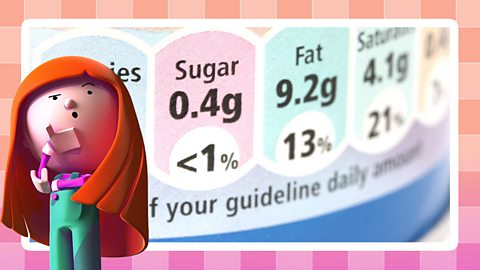
- count1 of 13
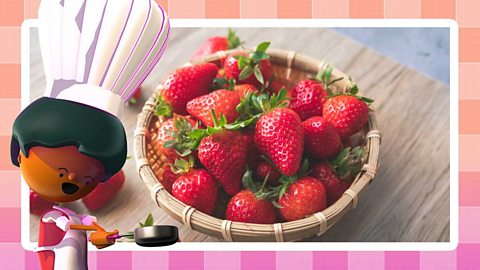
- count2 of 13

- count3 of 13
